If you want to make me cry, just tell me you spotted bindweed in my garden.
My grandma paid me by the hour when I was a kid to pull morning glory weed out of her garden, and let me tell you, I never lacked for work.
When I built a cottage in my own garden, we dug four feet down to lay footings, and we found bindweed roots all along the length. I later learned that this plant is called bigroot morning glory and I wasn’t surprised one bit.

We link to vendors to help you find relevant products. If you buy from one of our links, we may earn a commission.
It winds its way into my pea vines, snakes around my lettuce plants, and climbs up my rose canes.
I’m going to level with you. Once it takes a real hold in your garden, the chances of totally eliminating it are small.
It’s more of a matter of controlling it enough that it doesn’t reduce your crops or smother your ornamentals.
If you can catch it when it’s starting, though, it’s totally possible to eliminate it. This guide will help. Here’s what we’ll discuss to make that happen:
How to Manage Bindweed in the Garden
As early summer approaches, I find bindweed climbing up practically everything in the garden.
It wraps itself around my lavender and creeps up the garlic leaves. It competes with my beans for trellis space and considers my squash plants a lovely host.
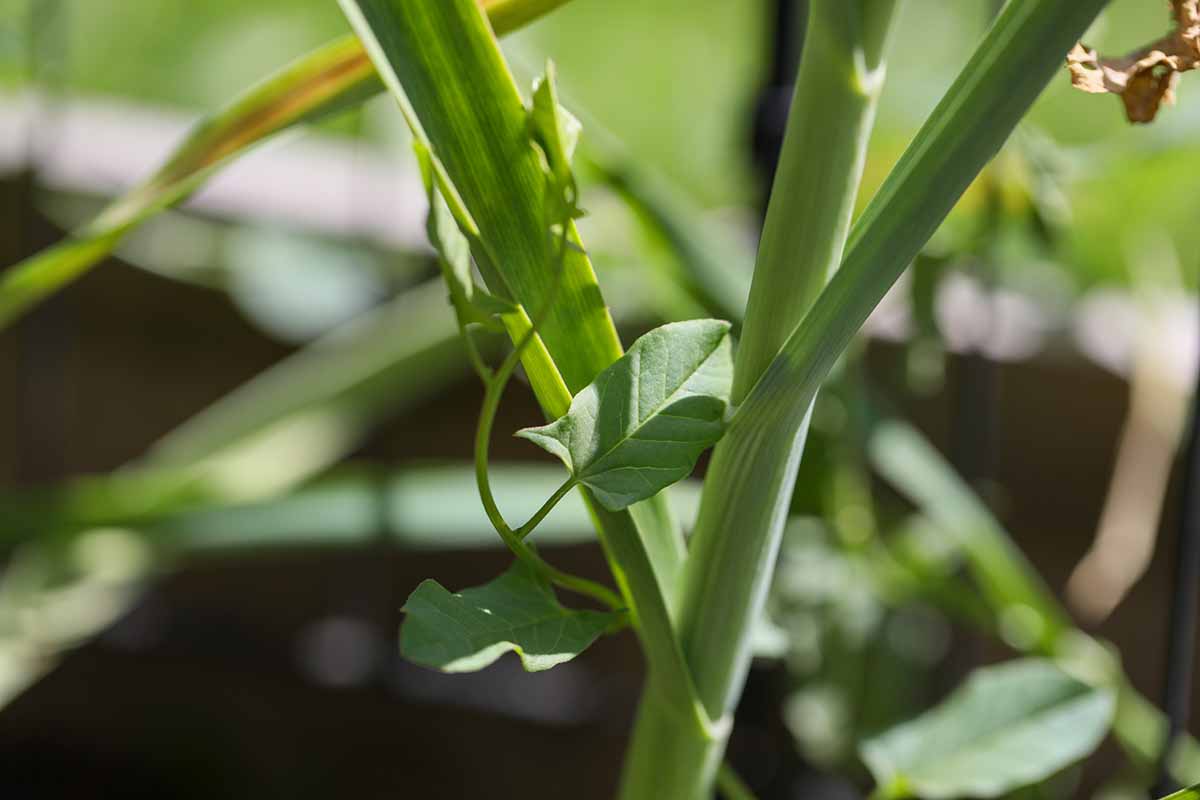
Finding yourself in a similar situation? Don’t throw your hands up and declare defeat just yet. Let’s figure out what we’re dealing with!
What Is Bindweed?
Bindweed is often called morning glory weed, creeping Jenny, wild morning glory, or bigroot morning glory.
To be clear, it’s most accurate to identify it by its botanical name: Convolvulus arvensis.
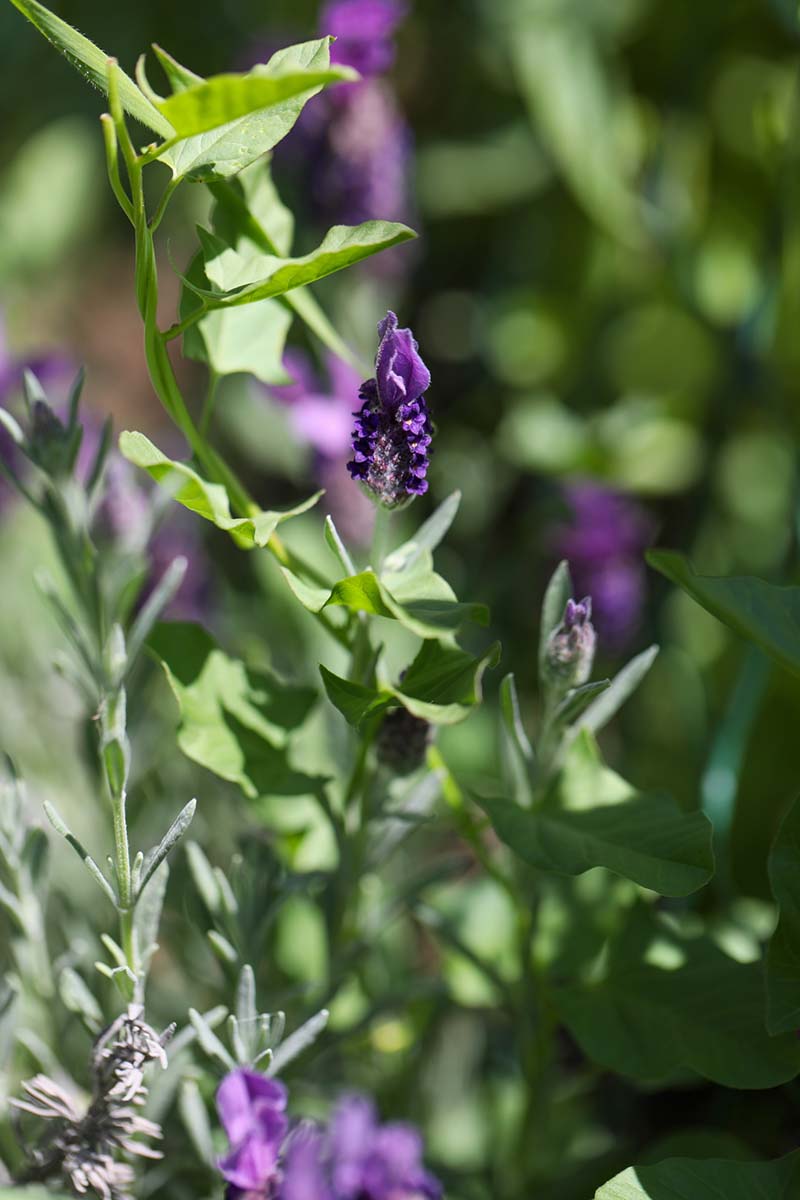
That helps us separate it from other similarly named plants.
It’s not the same stuff as the ornamental morning glory vines that we intentionally introduce to our gardens, which are plants in the Ipomoea genus.
Bindweed is aggressive and invasive. Introduced from Europe to North America in the 1700s, it can be found everywhere from urban flower gardens to wilderness areas.
I went on a days-long hike into one of the most remote parts of the continental US in Canyonlands National Park, and guess what I saw. Yep, bindweed.
It’s considered a noxious weed across a majority of the US.
It can grow in full shade, full sun, drought-like conditions, moist soil, lawns, and up trees, and you’ll definitely find it growing in your raised beds. It has a special affinity for raised beds.
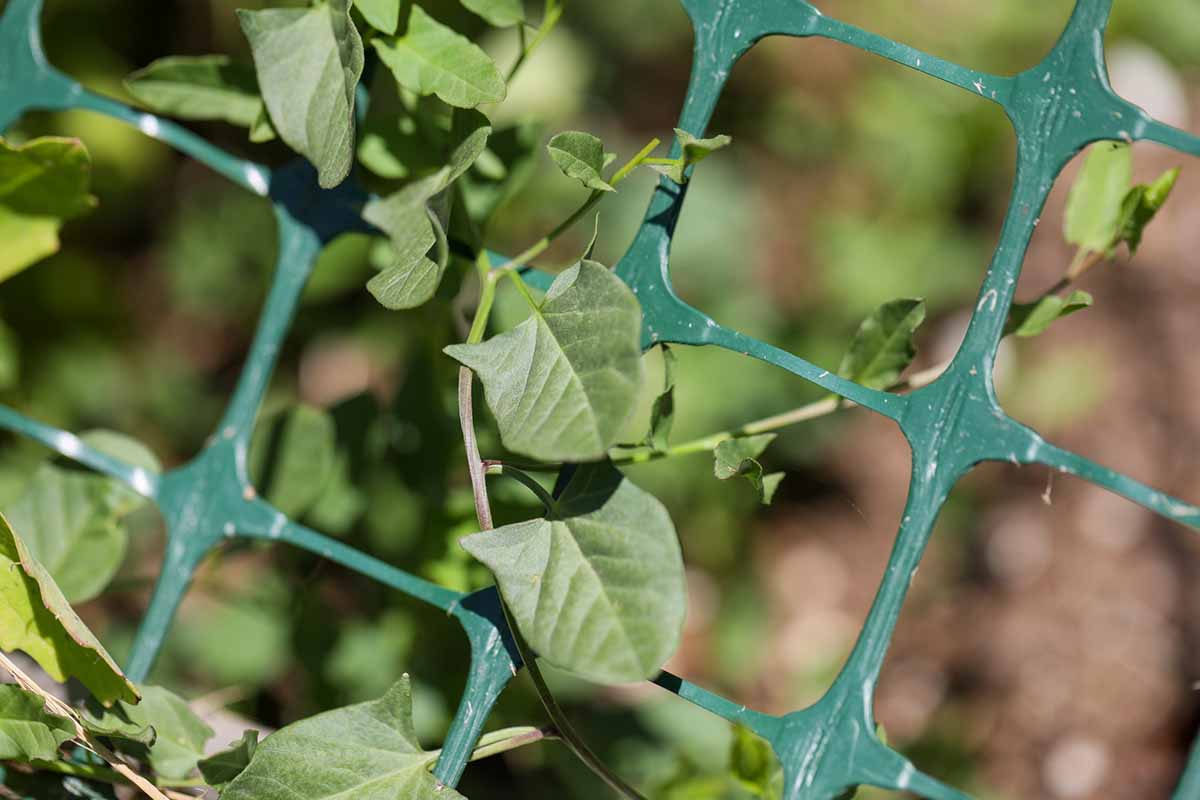
I’ve heard that it can’t grow in wet areas, but tell that to the patch of bindweed growing in the soggy spot where my irrigation line broke this spring. You almost have to admire its tenacity and adaptability.
Bindweed crawls along the ground, forming dense carpets until it finds something to climb up. Then, it winds and twines itself up to six feet high.
A single vine will wrap itself around an object over and over, forming a secure grip. Multiple plants will join together and create dense, tangled mats of leaves and stems.
Once you identify bindweed in the garden the first time, you’ll instantly be able to recognize it forevermore. And when you do, if you’re like me, you’ll briefly consider how much TNT it would take to dynamite that section of your garden.
The plant has white or light pink, inch-wide, trumpet-shaped flowers and alternate arrow-shaped leaves.
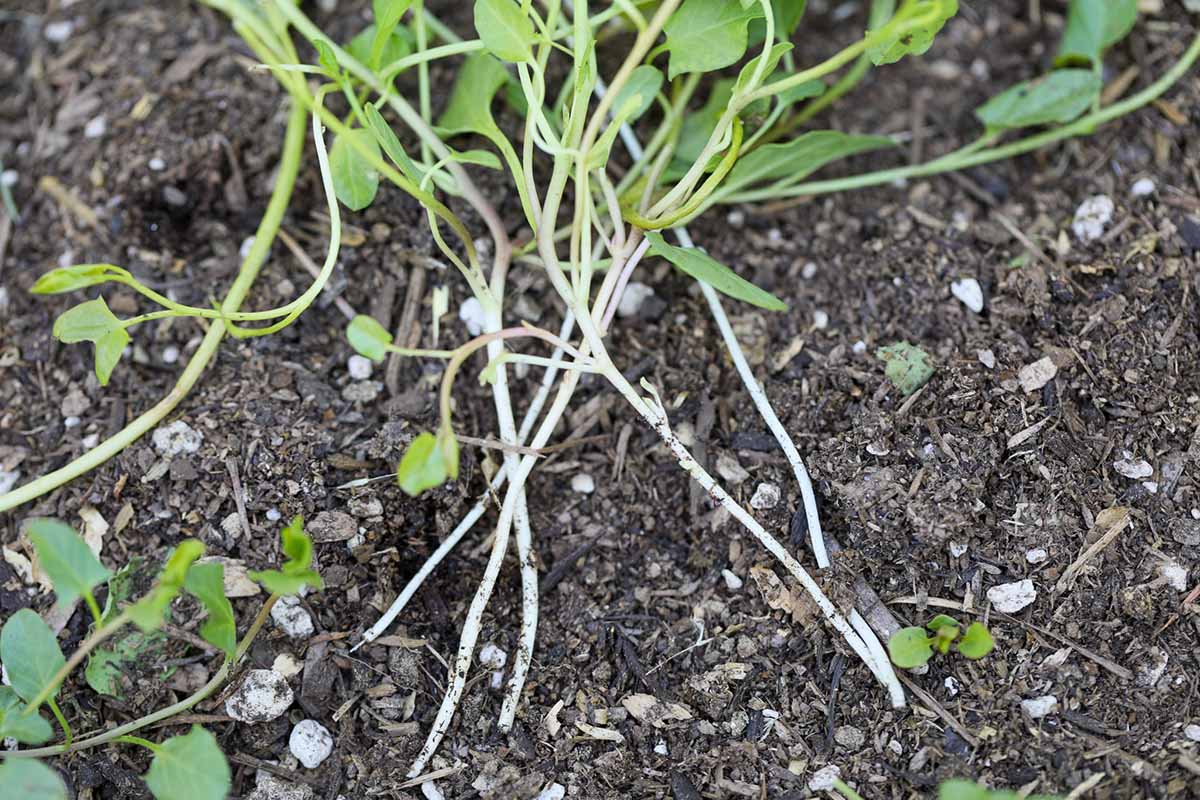
Young plants exude a milky sap from the stems when broken or cut. The roots are fibrous, pale, and fleshy.
There are two varieties: arvensis and linearfolius. The latter has more narrow leaves.
A Note of Caution:
Some people eat bindweed, either boiled or when it’s young, but we strongly caution against this.
The plant contains alkaloids like pseudotropine that can be toxic, and even deadly for animals like horses.
Speaking from experience, if you accidentally eat a leaf that snuck into your pea greens salad, you aren’t going to die. But eating too much can cause diarrhea and vomiting.
The unrelated hedge bindweed (Calistegia sepium, formerly Convolvulus sepium) looks similar, with white, trumpet-shaped flowers.
It’s larger overall, with a less invasive root system. It’s easy to control through hand pulling and is also edible and tastes good, so it’s not so depressing if you find it popping up in your garden.
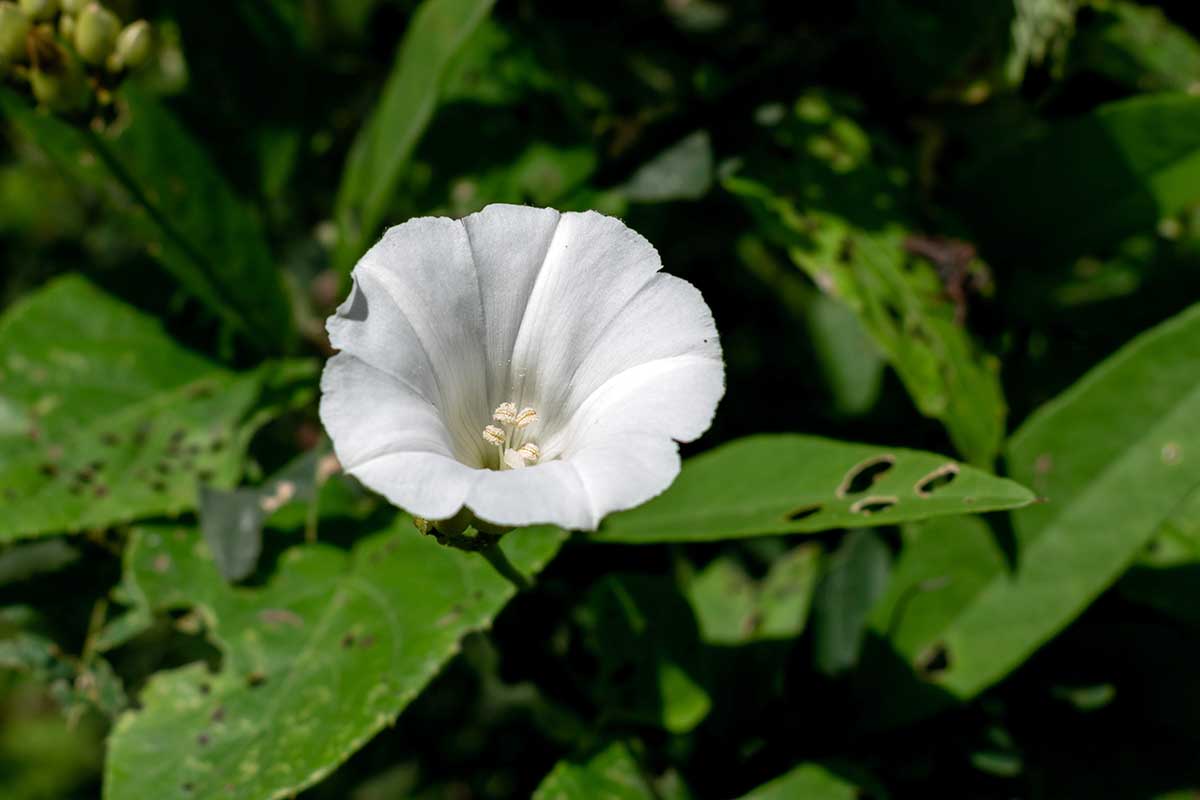
Just about the only place you won’t find bindweed torturing your garden is in the southern states, and sometimes I fantasize about moving there just to escape this menace.
In the western states, it can be a serious problem, reducing harvests in home and commercial gardens by up to 60 percent.
How It Spreads
Part of figuring out how to get rid of it is understanding how bindweed spreads. This plant has long, strong, flexible roots and rhizomes that can extend throughout even the densest soil.

Honestly, with how well it moves through the heavy clay in my yard, I wouldn’t be surprised one bit to find it cracking through rocks and concrete (it doesn’t, though).
The roots grow both horizontally and vertically, and can extend up to 20 feet.
But the roots are only the beginning. A small stem fragment can create a whole new plant.
Yep, that’s right – if you rip the weeds out of your garden and leave behind a bit of stem, a whole new plant can form.
While the upper parts die in freezing temperatures, those roots are perfectly happy, snuggled in their soil bed and waiting for warmer temperatures. By late May, I find myself knee-deep in the stuff.
It’s enough to make you scream.

The flowers produce seeds, and these seeds can also create new plants. Each vine can produce hundreds of seeds each growing season.
Oh, and the seeds can lie dormant in the soil for 50 years or more.
Once it starts growing, it can outcompete and smother everything from tender native flowers to tough, introduced ornamentals.
If you try to establish a new garden bed, morning glory weed can quickly smother all those seedlings you planted. Left to its own devices, it can even take down an established shrub or small tree.
Bindweed Control Options
Control methods work best when you use several tactics at once.
For a small area, you might use both hand pulling and chemical control. For larger areas, you might combine chemicals and tilling.
Don’t give up. Eradicating bindweed is possible, but it can take years of continuous effort.
In some cases, it might be easier to tolerate a small amount of the plant in your garden.
Just don’t let it get out of control, or you’ll have a much bigger and harder-to-handle problem to manage.
Hand Pulling
Hand pulling is going to be the mainstay of control. The key is to get to the stuff when it’s young.
Pull it repeatedly over and over before it can flower, and you have a chance of depriving the roots of nutrition often enough to reduce its growth significantly.
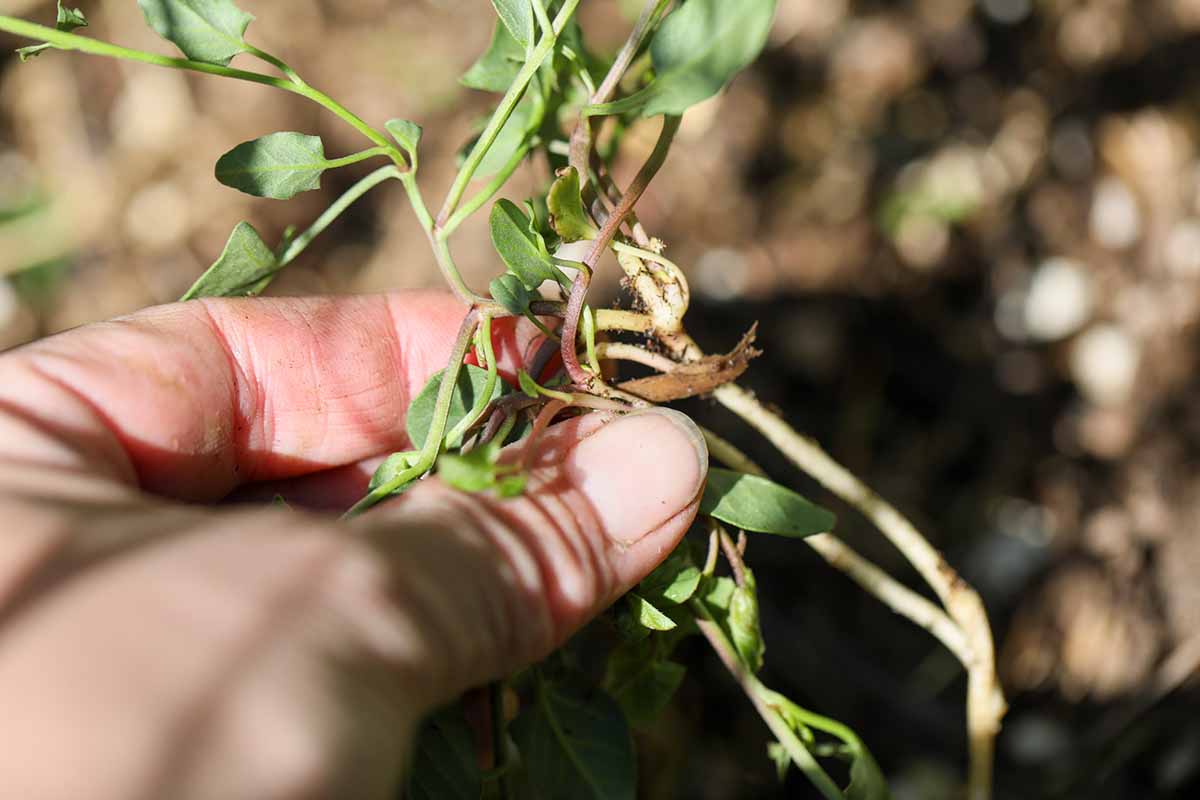
Grip the plant as close to the soil as you can and pull it out gently.
You might want to loosen up the soil a little or water it well before working so that you can remove more of the root. With gentle pulling, you can remove several feet of the root with one tug.
With dedicated pulling, I manage to keep it out of my rose beds, but it’s an ongoing effort.
You can expect to eradicate bindweed with persistent weeding, including pulling up a good portion of the roots, after about five years.
However, chances are that if the seeds arrived from a neighbor’s property in the first place, and they’re not making a concerted effort to get rid of it, they’ll make a comeback at some point.
Once the plants are established, hand pulling will help keep your garden clean, but it won’t kill the plants.
Those rhizomes will survive, and you might even encourage further spread as you pull out and leave behind root or stem fragments. Anything larger than two inches can produce a new plant.
Do not, under any circumstances, allow the plants to produce seeds. The second you see flowers forming, rip that stuff out ASAP.
After you pull the plants, don’t put them in the compost.
Some people will tell you that it’s enough to just cut the plant off at ground level to eventually starve the roots.
That’s possible, but it will take an extremely long time. Always try to pull roots out as you work.
Tilling
Ready for a more extreme solution?
Kill off a bindweed invasion by tilling your garden soil repeatedly every week or two, starting in the early spring and through late summer, for up to five years.
I know, that’s a lot of time to leave an area fallow. But if you are trying to raise crops in a certain part of the garden and they keep getting smothered by morning glory weed, it can be worth it.

In between tilling, lay a thick layer of black plastic over the soil to prevent light from reaching the ground.
Honestly, I’ve done this before. I just placed a bunch of potted plants over the area, and after three years, I was able to use my garden again without having to fight this tenacious weed.
It was a lifesaver for my seedlings, which were being smothered prior to my efforts.
Speaking of smothering, doing it intentionally won’t work because this plant can survive without light, and it will just crawl along under the cover or underground until it finds the edge of the cover and pops back out.
Chemical Control
I try to avoid using glyphosate in my garden because it’s nonselective, contaminates groundwater, and can stick around in our crops, so we end up ingesting it, and it has been linked to serious health concerns.
But sometimes you gotta do what you gotta do.
If you want to target bindweed, this is an effective way to do it because it kills both the above- and underground parts of the plant.

If you’ve reached the end of your rope, you can nab a gallon of Compare-N-Save herbicide at Amazon.
Products that contain dicamba, picloram, triclopyr, or quinclorac are also effective.
Whatever you choose, apply it on a calm day so the chemical doesn’t land on nearby important plants and accidentally kill them.
You can even dip a brush in the chemical and paint it onto the plant to kill it if you want to be extra precise.
As with hand pulling, this isn’t a one-and-done thing.
You’ll need to reapply continually throughout the growing season, though you’ll find that you’re tackling fewer and fewer plants as time goes on.
Learn more about the safe application of garden chemicals in our guide.
Bindweed Prevention
There are a few things you can do to prevent morning glory weed from getting its claws into your garden.
One is to lay a thick layer of plastic underneath any raised beds that you construct. It won’t prevent the weed from finding its way out and along the edges, but it won’t come up into your beds.
Next, only buy certified weed-free seeds and seedlings. If you see something that looks like bindweed climbing around in the nursery container, run – don’t walk! – in the other direction.
Finally, if you buy topsoil, make sure it comes from a source that guarantees on pain of death that their soil is weed free.
Morning Glory Weed Is Anything But Glorious
Like mastering an instrument or learning to meditate, controlling bindweed is a lifelong pursuit.
It’s not all bad news, though. There is good evidence showing that the weed might have some promise medicinally.
Plus, researchers in chemical engineering at the Technical University of Catalonia, the Chemical Institute in Barcelona, Spain, and the University of Malaysia found that C. arvensis extract acted as an antioxidant that could be used in food preservation.
The study was published in the journal Phytochemistry if you want to learn more.
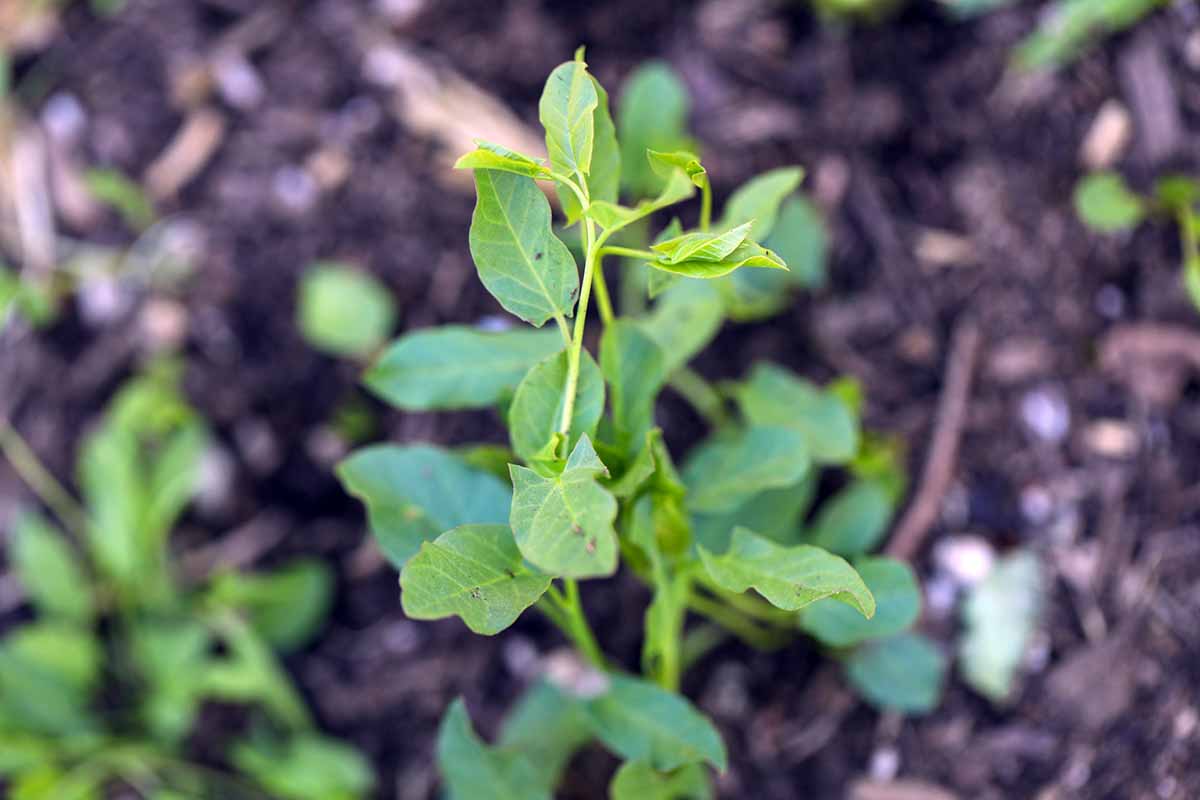
So, just remind yourself of that as you rip armfuls of the stuff out of your garden.
How do you plan to deal with this invader? Torch the place and run? A little bit of dedicated hand-pulling? Share your woes with us in the comments section below.
If you’re looking for some help in dealing with weeds in the garden, we have a few other guides that might be useful, including:
I do voluntary work for a church garden that was matted with bind weed. 13years now I still have them popping up here and there but I won the battle. It is lot of hard work to pull them from the root but with tenacity you can win the battle if it is small spaces
Hi Elizabeth, you’re right. Dedication can win the war. I have to keep reminding myself of that as I’m pulling mine!
I have been battling this beast for years. The last 3 years I’ve had health problems and had to let my gardens go. The weed has had a free ride. I combine pulling it up and painting it with a herbicide. Its going to take some time but I’ll get it pushed back. I have a neighbor that doesn’t try to control it and that certainly contributes to my trouble with the weeds.
Hi Deborah, I hope you’re doing better. I’m sure you’ll be able to get it back under control, but I agree with you: it sure would be nice if the neighbor’s kept it under control.
Lol I made the mistake of letting some of it climb the fence surrounding my garden worst mistake ever now I am daily pulling for what seems like eternity
It doesn’t look all that awful at first. It’s kind of cute. Keep at it, you’ll get it under control.
Grandpa was talking to the neighbor who said that he had dug a basement. “Those roots go all the way down to hell.” “No so,” said grandpa, “that is where they come from.”
Haha, grandpa is right!
That’s so funny 😆 when I bought this place and my yard full of pretty purple flowers my favorite color little did I know this is the devil himself! I’ve been calling it devil weed before i knew what it was . So much work!! Never dies comes straight from hell I agree🤣
There is another option to help fight bindweed – bindweed mites. They are microscopic bugs who love munching on the weed. There is one thing to note though, like the other options it does take time before it will do serious damage if you have a large area to contend with. I have a large area just outside my front door that is overrun with bindweed. I contacted my local extension office and ordered some bindweed mites that they have as a form of biological control of the weed. You just apply them onto different sections of the invaded area… Read more »
Hi Michelle, thank you for sharing! I’d heard of bindweed mites (Aceria malherbae) but never tried them myself. I always hesitate to introduce foreign critters into my garden since it has gone terribly wrong so many times. But sometimes it goes very right! Keep us updated, I’d like to hear how it goes. Anything to help us in the battle against bindweed, right?!
A liquid mixture of glyphosphate and 24d works great. The round up keeps it from photosynthesizing and the 24d makes it grow at a rate that is unsustainable.
Thanks for sharing, Dan. I’ve never tried the combo, myself. I find glyphosphate alone is effective enough.
It can grow more than 20 feet high. I’ve seen it covering wild rose and actual trees at least that high.
Oh boy, Uriah, you’re describing my nightmare! I’ve never seen it get that tall but I don’t doubt it. That stuff is unreal.
Put on a pair of plastic or latex gloves followed by a pair of cotton or something similar. Pour your weed-killer in a plastic tray, then wet your gloves. Now caress your Bindweed. Take care not to touch your other prized plants so later in the season is the best time. Worked for me.
That’s a great alternative to the paint brush method. Thank you for sharing!
Try putting a small bamboo cane for it to grow up, then remove the bottom of a 2 litre plastic bottle put over cane and skirt inside with your weed killer, this way you only hit te bindweed, Des
Fluroxypyr is the most effect herbicide against bind wind.
Thanks Ali, good to know. If good old glyphosate fails me I’ll give it a try.
Bindweed is bad but the “regular” purple-flowering morning glory vine isn’t much better! Both are extremely invasive…I would never plant morning glory!